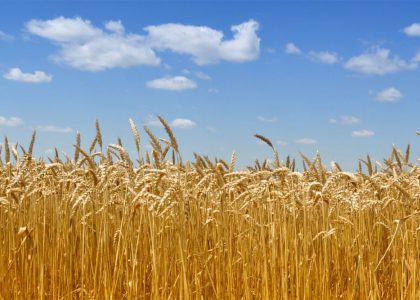The corn market doesn't get a lot of hype in the news except during years of extremes. It's a shame really, because the corn futures market is one of the world's biggest and is dominated by the hedging activity of domestic farmers and producers battling it out over the smallest edge of profits at the margin. Following the battle between these domestic behemoths is a wonderfully anticipatory data stream for successfully trading a market that's small enough to be accessible to the retail trader but large enough to capture the world's attention and usage. Here is how we employ the Commitment of Traders report in conjunction with technical and seasonal analysis to stack the odds in our favor.
World corn production is roughly one billion metric tons. One ton equals 39.37 bushels that means the world harvested, brought to market, stored, insured, transported and distributed 39,370,000,000 bushels of corn. There's a lot riding on each and every crop, to say the least. Therefore, it should come as no surprise that the companies responsible for major stakes in its production or consumption would be among the most knowledgeable and well-informed participants in the market.
 We follow their actions through the commercial trader category of the Commodity Futures Trading Commission's weekly Commitment of Traders report. Their net position is plotted in the third pane of the included chart for the last year. As would be expected, companies that use corn provide support as the market falls with each one locking in their future input costs at better prices. Conversely, farmers sell their crops aggressively when prices rise above a collectively perceived profit level. We track the momentum of their purchases and sales in the fourth pane because we want to know how sensitive they are to a given price level. We want to trade inline with the commercial traders' sense of value and piggyback their purchasing power as best we can. Therefore, we only look for trades inline with the commercial traders' momentum.
We follow their actions through the commercial trader category of the Commodity Futures Trading Commission's weekly Commitment of Traders report. Their net position is plotted in the third pane of the included chart for the last year. As would be expected, companies that use corn provide support as the market falls with each one locking in their future input costs at better prices. Conversely, farmers sell their crops aggressively when prices rise above a collectively perceived profit level. We track the momentum of their purchases and sales in the fourth pane because we want to know how sensitive they are to a given price level. We want to trade inline with the commercial traders' sense of value and piggyback their purchasing power as best we can. Therefore, we only look for trades inline with the commercial traders' momentum.
U.S. corn production accounts for roughly 35% of the world's total. This is why seasonality is so focused on our weather patterns. The corn market is currently entertaining a pre-planting rally. You can see this period from last year highlighted on the chart. You'll also note that this period's end led right into the buy signal that marked the beginning of the actual planting worries we deal with every year. Finally, there is one key difference between last year's pattern and this year's. Note that commercial trader momentum was positive at this time last year. Therefore, we never traded the short side of the pre-planting seasonal decline. This year, commercial trader momentum is negative and the our short-term momentum trigger has been set due to the market's recent rally.

We have all the criteria we could look for in a swing trade. Commercial traders expect the market to fall. It's currently overbought which, sets the trigger for a reversal lower and corresponding short sale. Finally, we have a seasonal window of opportunity based on one of the deepest agricultural markets in the world. We'll sell May corn futures at the first signs of a reversal lower. We'll follow this up with a protective buy stop placed above whatever the current swing high turns out to be. Finally, we'll re-evaluate this trade when the commercial corn consumers return to the buy side as they establish the price floor heading into the actual U.S. planting season.





